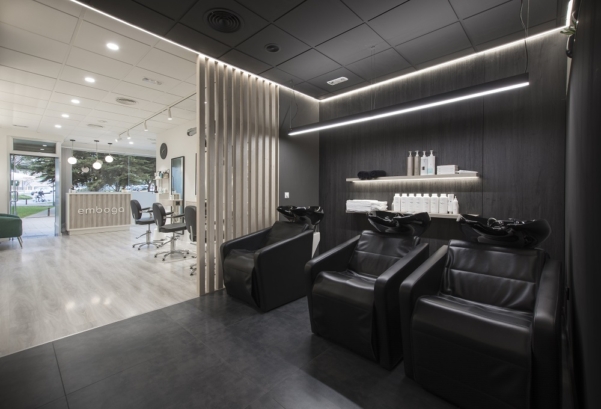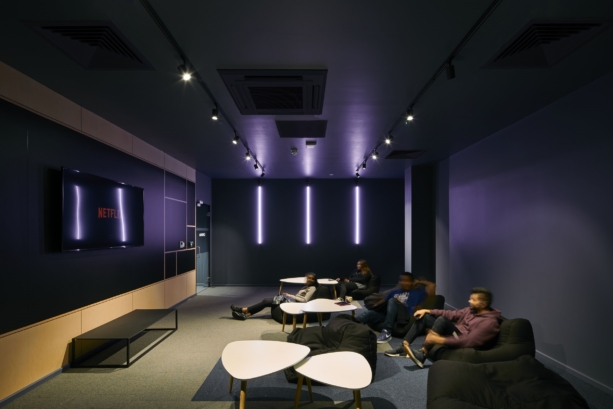
We are a leading manufacturer of quality internal and external lighting products for commercial, industrial and retail applications.
View all productsAt Ansell Lighting we design and manufacture an extensive range of luminaires for a diverse number of sectors and applications. Whatever the shape, purpose or style of your space, we have a lighting solution.
View all sectors & applicationsWe are a leading manufacturer of quality internal and external lighting products for commercial, industrial and retail applications.
Welcome to Ansell lightingWe are here to answer any questions you may have, help you find a stockist or speak to a local member of our team.
OCTO delivers the complete smart lighting package to transform the efficiency and ambience of commercial and residential spaces.
Find information regarding our product warranty, product data downloads and FAQs regarding lighting and technical terms. Here you will find support with training CPDs as well as useful lighting design and LED strip calculators.
A Definitive Guide to Track Lighting

Track lighting is hugely popular, offering a flexible way to highlight featured objects in residential and commercial settings.
In this blog, we’re going to delve into its origins, workings and benefits to give you a definitive guide to track lighting.
When was track lighting first used?
Track lighting systems have been around for some time. In fact, track lighting dates back to the early 1960s, when a company called Lightolier, a division of Signify, previously known as Philips Lighting, designed and produced the first track.
A decade later, track lighting was redesigned and updated, being used through the 1970s, by incorporating some key improvements on the initial version.
By the 1980s, track lighting had become the lighting system of choice to provide accent lighting within interior design applications. It was emerging as highly popular within the retail sector at that time.
More recently, with the development of LED spotlights, track lighting is enjoying another resurgence as an optimum solution within the specification arena.
How is track lighting most commonly used?
Track lighting is extremely popular in many types of residential, commercial and retail applications.
In the retail sector, track lighting is a common way to showcase the range of items on sale, from small, delicate pieces like jewellery, right up to large-scale products like cars and motorbikes.
What are the benefits of track lighting?
Now, let’s explore the many benefits of track lighting.
Track lighting is flexible
One significant benefit of installing track lighting is its flexibility. It offers a highly flexible solution, as once the track is correctly installed and positioned, you can add or remove luminaires as required. Plus, you can also position, direct and orientate spotlights where required, allowing for a bespoke solution for each application.
Track mounted lighting fittings can be, very easily, adjusted or remodelled to suit any changes within the environment or changes in emphasis within the space. They can be moved, repositioned and orientated to meet any new requirements. What’s more, the number of fittings can be adjusted, either by increasing or decreasing the number, resulting in a different level of illuminance or a re-focus of the light within the space.
Track lighting is cost-effective
The installation of track lighting, either surface mounted, suspended or recessed, offers a cost-effective lighting solution. Once installed, users can make their own changes to the track lighting system, which reduces the need for costly electrical works and/or replacement equipment.
Track lighting is adaptable
Track lighting offers the adaptability to meet the customer’s specific needs at any time without having to call an electrical contractor to undertake any installation work.
LED track fittings are long-lasting and energy-saving
The added benefit of LED spotlights is that they are long-lasting and reduce your energy usage, creating an optimum and environmentally friendly energy-efficient solution for many years to come. Crucially, LED track lighting also enables you to include emergency fittings as part of an emergency lighting solution allowing people to leave the building safely.
What are the different types of track lighting?
There are generally two options of track-based lighting systems, each based upon supply voltage.
Option one is a mains voltage (230Volt) track system with the supply being installed directly into the Live End of the track.
Option two is a low voltage track system that has a reduced voltage supply to the track, for instance at 24 Volts, where the electrical supply from the mains is installed to a 24-Volt Constant Voltage Non-Dimmable LED Driver positioned remotely before connection to the track Live End.
Let’s look a little more closely into each of these track systems.
The Low voltage track lighting – How does this system work?
The low voltage track system is ideal for projects where it is easy to position and install the LED driver within proximity of the track live end whilst also hiding it from view. If that is not possible for the application, a mains track offers an alternative solution.
What’s the benefit of a low voltage track lighting system?
A significant advantage of low voltage track systems is that the fittings are, in the main, much smaller and more compact. This makes it an ideal solution where space (such as ceiling height) is at a premium. It also lends itself to applications where fittings are adjacent to the object being illuminated, such as in many retail applications.
The Mains voltage track system – Are there different options?
There are two main types of mains voltage track systems.
The Single-circuit track, sometimes referred to as ‘single-phase track’, uses two conductors: ‘live’ and ‘neutral’. This is usually the most cost-effective solution for track lighting and is often used in residential applications where all fittings placed upon the track are operated together on a single circuit.
Alternatively, there’s a Three-circuit track, sometimes referred to as ‘three-phase track’ and this uses four conductors: ‘live 1’, ‘live 2’, ‘live 3’ and ‘neutral’.
In each case, the track casing is used as the earth.

What are the main differences between single-circuit and three-circuit track lighting systems?
Generally, both single-circuit track and three-circuit track lighting are rated as 16 Amps at mains voltage. However, in the case of a three-circuit track, this is across each of the three circuits, offering potentially increased capacity for fittings split evenly across those circuits.
The profiles below show that a three-circuit track is generally physically larger than a single-circuit track.
The only major downside of specifying a three-circuit solution over a single-circuit solution is cost, in that both equipment and installation will be increased. However, the benefits gained in flexibility and system capacity should certainly ease that concern.

Single Circuit Track (sample diagram)
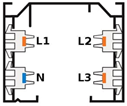
Three Circuit Track (sample diagram)
The benefits of three-circuit track lighting
When you choose a three-circuit track over a single circuit track, this allows you to operate the lighting across three different circuits. Each one can be controlled separately, allowing the user greater flexibility in the different lighting scenes available for the application.
Generally, there’s a more extensive range of equipment available for three-circuit track systems, so you have more choice when specifying a project.
Different types of fittings available include:
- Narrow beam spotlights
- Medium beam floodlights
- Wide beam floodlights
- Wallwash fittings
- Pendants
Remember, installing three circuit track doesn’t mean each one has to be used. You can leave one unused or connect, through mains wiring, the live conductors of two circuits together so that they can be operated as one on a single circuit, allowing greater capacity.
Is it a track lighting system or recessed downlights?
If you’re weighing up whether to install a track system or recessed downlights, here are some considerations to bear in mind.
Track lighting has the benefit of each length of track has a single point of installation, either at one end or centrally somewhere along the track length, for getting a supply to multiple fittings.
On the other hand, recessed downlights require wiring to each point of illumination and a cable has to travel within the ceiling void to reach each of these points. Potentially, this can increase both the installation cost in materials and the installation time required on-site for the contractor.
When it comes to making changes to installations with recessed downlights, you’ll need an electrical contractor to remove the fitting, cut a new hole and get a supply to that position. This leaves you with unsightly holes requiring building work and redecoration, so costs can quickly add up.
With a track system, the users can easily make changes themselves by switching the system off, isolating the lighting circuits and then removing the fittings to reposition them somewhere else within the space or in another area if the same track system is installed.
This gives you the flexibility to carry out as many changes as you like, so you can provide illumination wherever it’s needed at different times.
Plus, this prevents the need to buy additional lighting equipment when higher illuminance levels are required in an area. Instead of purchasing new equipment, you can simply move it around and save energy by removing illumination from areas where it isn’t needed.
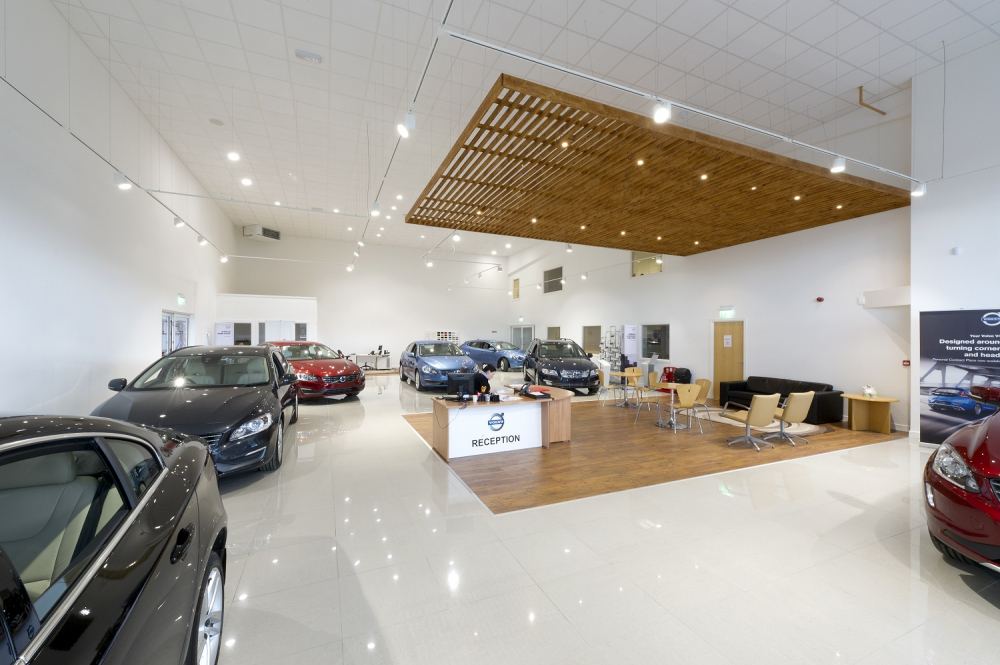
What are some examples of track lighting systems in use?
The projects shown here are a Volvo Garage in Kildare, Ireland and The Yard in Manchester.
In both examples, either all or a large proportion of the building’s illumination is provided exclusively by a three-circuit track lighting system.
Previously, this could post an issue when it comes to including an emergency lighting option.
However, not any more and rather than installing separate lighting to offer the emergency component, there is now a solution where the emergency lighting can be simply fixed directly to the Unity three-circuit track where one circuit provides the permanent supply required to maintain the charging facility to the units.
These three-hour non-maintained units gain the battery’s power from the track, and the green charging LED incorporated within the head.
A 3.2W light source of 250 lumens with a 105° beam angle offers illumination – this is available for three-circuit track lighting installations only.
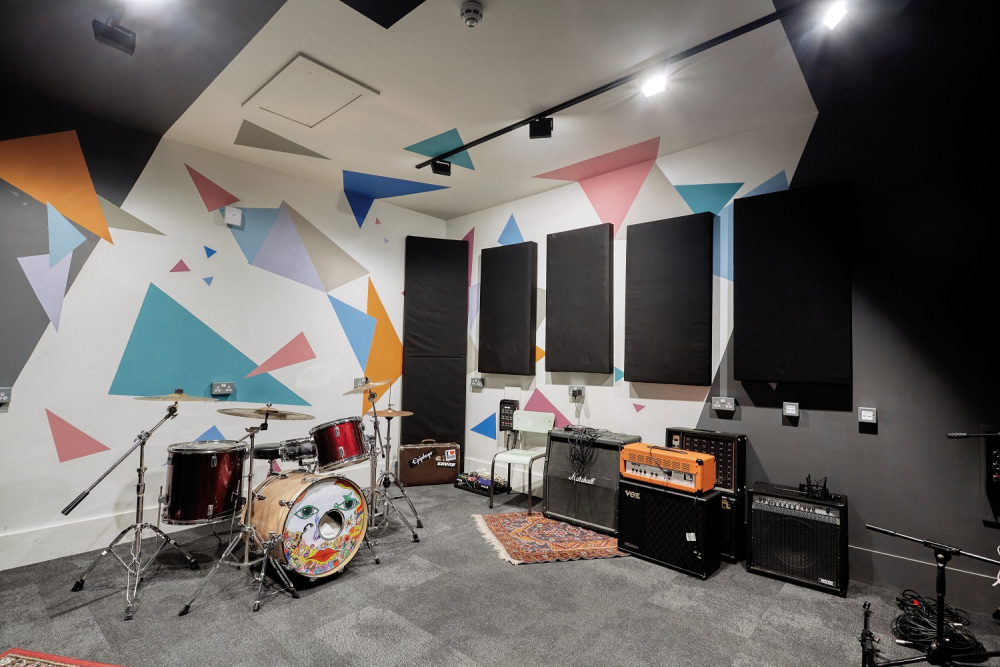
Track lighting questions answered
Hopefully, we’ve given you a useful insight into track lighting. It is one of many systems available through Ansell Lighting, so if you’d like to explore whether it’s the right application for your project, our experienced team would love to chat and help you find the right solution.
For more information about track lighting or any other lighting questions you may have, get in touch with our experts on 01942 433333 or emailing sales@anselluk.com
You Might Also Be Interested In...

